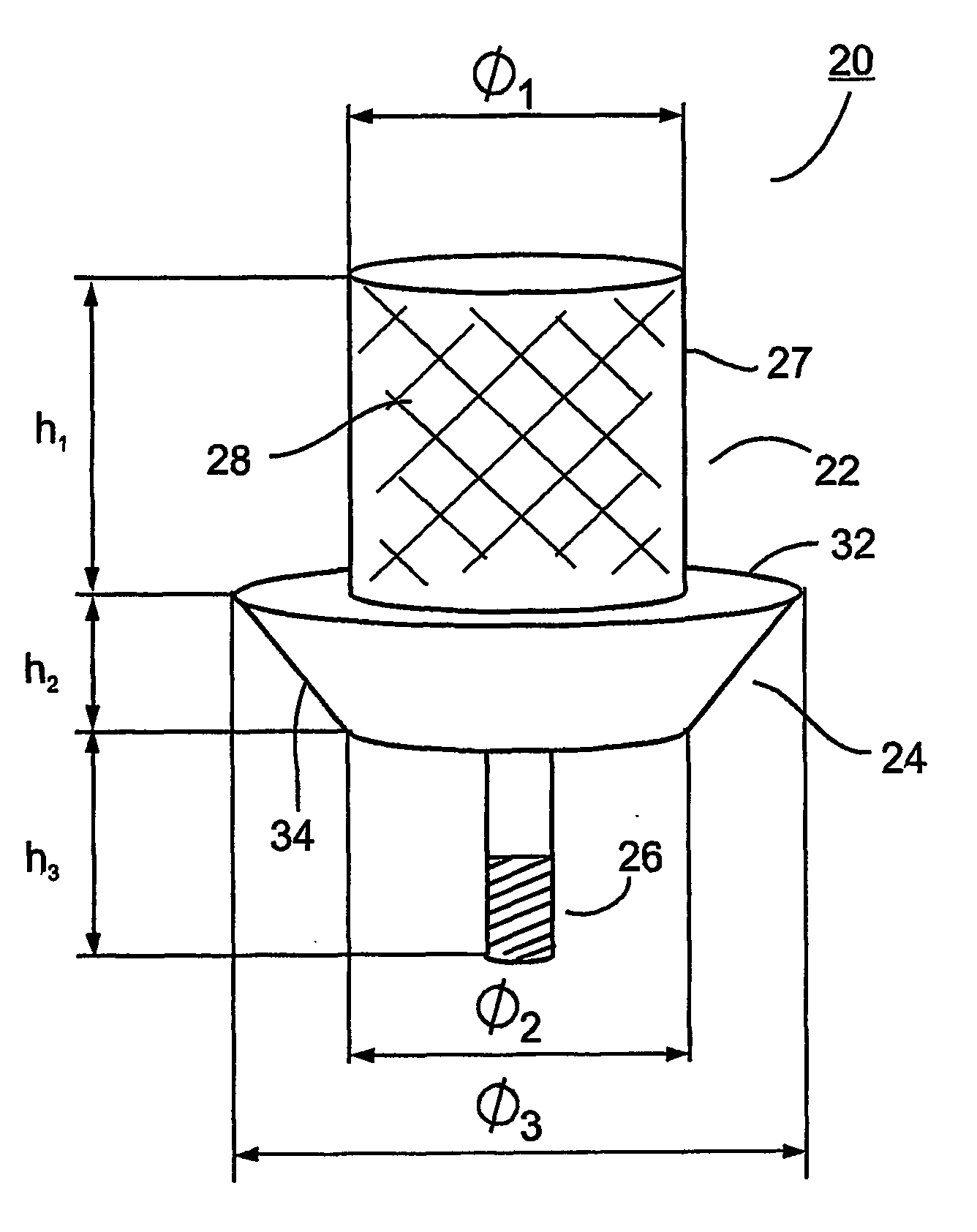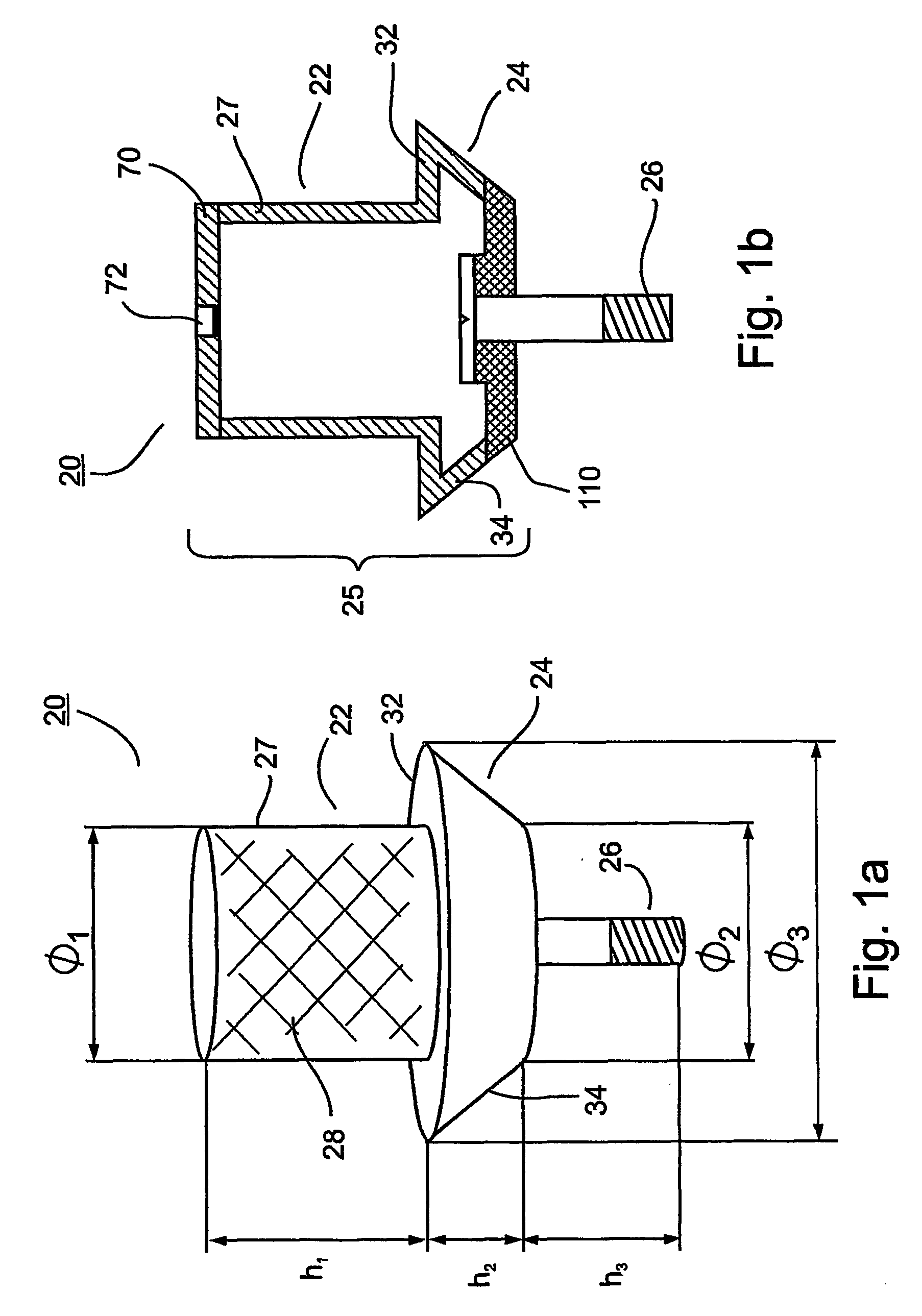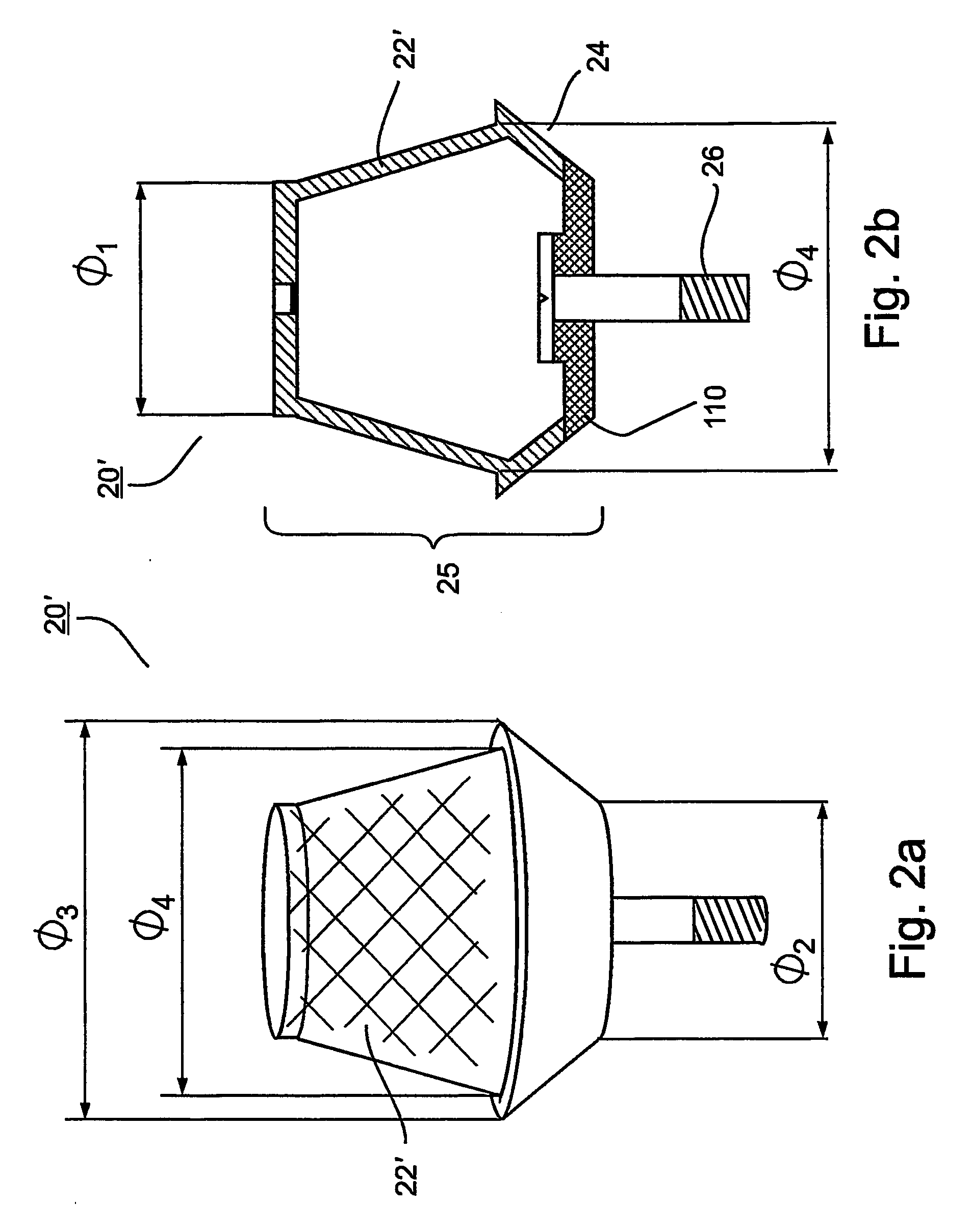Self powered osteogenesis and osseointegration promotion and maintenance device for endosseous implants
a technology of osteogenesis and osseointegration, which is applied in the field of self-powered devices, can solve the problems of low bone-to-implant contact ratio, poor bone strength at the interface, and the risk of crestal bone loss of the implantant,
- Summary
- Abstract
- Description
- Claims
- Application Information
AI Technical Summary
Problems solved by technology
Method used
Image
Examples
Embodiment Construction
[0046] The present invention discloses, in various embodiments, an osteogenesis and osseointegration promotion and maintenance device (hereinafter “osteogenesis device”) for endosseous implants, capable of providing DC, AC and arbitrary current train pulses, or any combination thereof. In a preferred embodiment in which the osteogenesis device is self-powered, the device preferably uses as power source an internal battery that may be miniaturized (i.e. a microbattery). The microbattery may be further integrated with electronic and / or actuating circuitry. Alternatively, the osteogenesis device can be powered remotely from outside the body. In embodiments of devices with extremely small internal cavity volumes (such as a dental implant) that cannot use conventional batteries, the internal battery is preferably a three-dimensional (3D) thin film micro-electro-chemical cell as described in U.S. Pat. No. 6,197,450 to Nathan et. al. The micro-electro-chemical cell may be integrated on the...
PUM
| Property | Measurement | Unit |
|---|---|---|
| voltages | aaaaa | aaaaa |
| voltages | aaaaa | aaaaa |
| frequency | aaaaa | aaaaa |
Abstract
Description
Claims
Application Information
 Login to View More
Login to View More - R&D
- Intellectual Property
- Life Sciences
- Materials
- Tech Scout
- Unparalleled Data Quality
- Higher Quality Content
- 60% Fewer Hallucinations
Browse by: Latest US Patents, China's latest patents, Technical Efficacy Thesaurus, Application Domain, Technology Topic, Popular Technical Reports.
© 2025 PatSnap. All rights reserved.Legal|Privacy policy|Modern Slavery Act Transparency Statement|Sitemap|About US| Contact US: help@patsnap.com



